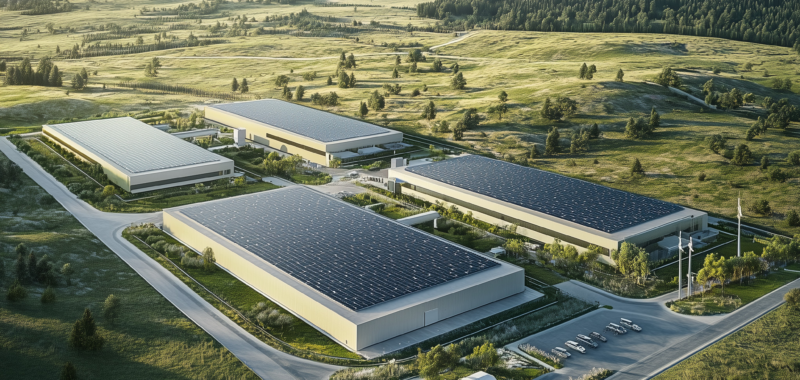Meta announced a new partnership this week in the hopes that geothermal energy can help it reduce its greenhouse gas emissions.
Meta and startup Sage Geosystems struck up a deal to develop new geothermal power plants. If they make it to the finish line, the plants would provide carbon pollution-free energy that Meta needs for new data centers in the US.
The company has struggled to keep its carbon pollution down since it pledged in 2020 to reach net zero emissions by the end of the decade, its latest sustainability report published yesterday shows. The race to develop more powerful AI tools has raised the stakes, triggering the development of new energy-hungry data centers. So, Meta is putting its faith in next-generation geothermal tech to unlock a new source of clean energy.
Meta is putting its faith in next-generation geothermal tech to unlock a new source of clean energy
The announcement came out of a Department of Energy (DOE) workshop on Monday, showing the Biden administration’s hopes that geothermal energy can also help the US meet its climate goals under the Paris agreement.
“Every new next-generation geothermal project helps prove out these technologies and raise awareness about geothermal’s opportunities to provide firm, flexible power nationwide,” Lauren Boyd, director of the DOE’s Geothermal Technologies Office, said in an email to The Verge.
The US hardly uses any geothermal energy today, which made up less than half a percent of the nation’s electricity mix last year. Typical geothermal plants take advantage of the heat that’s generated within our planet, drawing up hot fluids from natural reservoirs to produce steam that turns turbines. But relying on those natural reservoirs limits where you can build a geothermal plant.
Sage is developing technologies to harness that energy source from hot, dry rock formations. To do that, it essentially creates artificial reservoirs by drilling and pumping water underground. It field-tested this method for the first time in 2022 using an abandoned gas well in Texas. Sage says it can scale the technique up using common “off-the-shelf oil and gas technologies.” If it drills 18–20 wells near each other, for example, it expects to be able to generate 50 megawatts of geothermal power.
Its partnership with Meta is to eventually provide up to 150MW, but the deal is still in a very early stage. There are no details yet on where the new plants would be located, and the companies tell The Verge they have yet to sign a long-term contract called a power purchase agreement.
“We want to give [Sage] the clarity that we’re there as their partner, ready to sign an agreement at the right time. But the Sage team will be responsible for taking the project from today, finding a location, getting the permits done, designing and engineering the whole facility. There are a lot of really important steps, especially for technologies like Sage that are ripe and ready to scale,” Urvi Parekh, head of renewable energy at Meta, says.
Sage also still has to find investors for this project, CEO Cindy Taff tells The Verge. The first phase of the project will be to show it can generate 8MW of power by 2027 before scaling up to 150MW some 36 to 48 months later. The first phase alone is expected to cost up to about $50 million, although Sage says that could fluctuate as the project takes shape. Meta isn’t sharing any figures yet on how much it’s willing to spend on the project.
Costs and all the heavy lifting it takes to get a geothermal project up and running — from securing permits to safely drilling wells — has been a stumbling block for geothermal energy for decades. It can be seen as a riskier venture than putting up solar panels or wind turbines. That’s what makes buy-in from a tech giant like Meta a boon for these technologies.
“It’s encouraging. Meta has a lot of money. They chew up a lot of electricity running all these data centers. It’s good to see them interested in decarbonizing,” says Jefferson Tester, a professor of sustainable energy systems at Cornell University where researchers are developing a geothermal system to heat the school campus. Still, for geothermal energy to really take off, it’ll need more public and private support, he says.
Geothermal energy does have some advantages over other renewables. It can provide consistent power to make up for shortfalls in wind and solar energy that fluctuate with the weather and time of day. That advantage has made it an attractive proposition for Meta and Google, which has partnered with another geothermal company for its data centers.
“Our data centers are online 24 hours a day so that users can access the products like Instagram and WhatsApp and others. And so what’s great about geothermal energy is that it can also supply electricity around the clock,” Parekh says. “As we want to build more data centers, it’s going to be really important that the electricity grids around us continue to decarbonize.”

